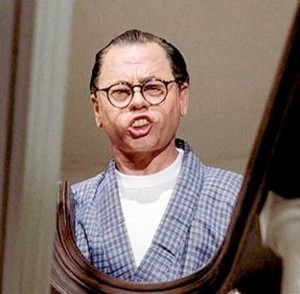
Sept. 24 update: Good news — CBS appears to have pulled all of the Farnfucious clips off their YouTube channel.
It’s hard to believe that a major U.S. broadcast network can get away with it, but there it is on YouTube: “Farnfucious Say,” a regular (apparently) skit on the “Farnsworth & the Fox” show produced by CBS. The show’s co-host, “Farnsworth,” is a puppet a la “Sesame Street” and the “Fox” is (not surprisingly) a woman cast for her sex appeal.
“Farnfucious” — they couldn’t even spell the pun on Confucius correctly — is a puppet character with Fu Manchu mustache and traditional Chinese-looking garb, talking in a slimy broken Chinese accent the way white people like to parody Asians speaking. The puppet is introduced by a woman’s voice speaking in the same cheesy accent intoning, “And now, anothah episode… of Farnfucious!” and afterwards the outro: “Words of wisdom… from Farnfucious!”
Continue reading





 The most famous early examples of yellowface are the various actors from Warner Oland and Boris Karloff to Peter Sellers who played the evil, inscrutable Fu Manchu; Oland and Sidney Toler as the detective Charlie Chan in a series of hit movies; and the German-born, diminutive Peter Lorre as the Japanese detective Mr. Moto in another string of movies.
The most famous early examples of yellowface are the various actors from Warner Oland and Boris Karloff to Peter Sellers who played the evil, inscrutable Fu Manchu; Oland and Sidney Toler as the detective Charlie Chan in a series of hit movies; and the German-born, diminutive Peter Lorre as the Japanese detective Mr. Moto in another string of movies. 

 Is it just me? I really think “Ask a Ninja,” a free video podcast that consistently ranks among the top-5 popular video podcasts on Apple’s super-influential iTunes store, is dumb. Really dumb.
Is it just me? I really think “Ask a Ninja,” a free video podcast that consistently ranks among the top-5 popular video podcasts on Apple’s super-influential iTunes store, is dumb. Really dumb. 





